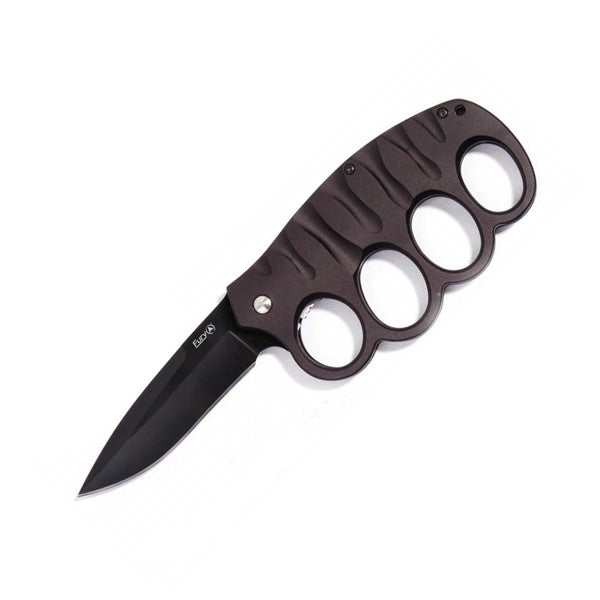
Different Knife Point types Guide and their Uses
Here is a summary of the most popular knife points and blades with an explanation of their respective uses to help you decide which blade and point is most appropriate for you. By no means is this an all-inclusive guide and there are uses too vast to list them all here, but we will do our best to offer as much information as we can accurately include for your edification. Enjoy the read and information set forth for you.

Clip Point
The Clip Point Blade is one of, if not the most common knife blades available. This is so because of the many uses it offers such as cutting with its large belly and piercing due to its narrow point. This blade makes a great choice for and EDC (everyday Carry). The back of this blade is straight up until around the half way mark where it starts it's slant towards the tip. The belly is nicely rounded for cutting and can be very sharp. Some even come with a half serrated edge for tougher cuts as well. This blade is used on many folding and fixed blade varieties and is very popular on Bowie knives.

Drop Point
The Drop Point is another very common blade with a nice cutting edge (belly) and piercing point. It is very popular as an EDC as well. It can come with a plain edge or serrated for more functionality. The spine forms a very subtle curve leading to the point of the knife and the belly is nicely curved for slicing and cutting effectively. For this reason, the drop Point blade is popular on the hunting knife variety among many other folders and fixed blade knives.

Tanto Point
While the Tanto Point knife is not necessarily an all around utility knife, there is one thing this blade is really good at. If piercing through tough material is what you need, look no further. The Japanese used similar blades on their swords such as the Katana or Daisho with the sole purpose of piercing armor in battle. This is a very strong blade for sure not to mention it looks a little intimidating during a conflict.

Spear Point
The Spear Point is an equally balanced blade with a strong tip for piercing while retaining somewhat of a cutting edge (belly) yet not as pronounced as a clip point or drop point which are way better for cutting because of their rounder bellies. This blade can be sharp on both sides making it better for stabbing and piercing or just sharp on one side making it not as good of a piercing instrument. The Spear Point is frequently used in throwing knives because of their symmetry. Not particularity an EDC but definitely a good fighting knife in my opinion.
Needle Point
The Needle Point blade as the Spear Point above are also considered daggers by design. While similar to the Spear Point, The Needle Point is much narrower at the point thus the name. A perfect example of a Needle Point Blade is the Stiletto as pictured above.
Hawkbill Point
Now we get to my personal favorite in the fighting knives department. The tactical capabilities of the blade are limited only by the wielder's imagination. Not only is the curved blade utilitarian in making long cuts such as in carpet cutting but are well honed as defensive and offensive weapons in Eastern Cultures such as Indonesia, The Philippines and other Eastern Civilizations. Also known as a Karambit, this blade goes a long way in modern self defense applications.

Sheepsfoot Point
The Sheepsfoot edge has a straight cutting blade with a curved spine that connects to the cutting blade with really no piercing point to speak of. Not ideal for stabbing or piercing but wheedling or carving wood is a cinch with this particular edge. Also known to be used in electrical work and other such fine work. I've heard that it has been called a Sheepsfoot blade because this type of blade was used to trim the hooves of sheep. Not sure of its accuracy but interesting none the less.

Trailing Point
What distinguishes a Trailing Point knife is how the spine of the knife curves upward creating a longer Belly for slicing and skinning. Mostly associated with skinners, this blade is lightweight and is ideal for skinning fish and other small game. This blade is also used on larger slicing type weapons or swords in various Martial Arts Systems.

Gut Hook Point
The Gut Hook blade is a special blade used largely by hunters to field dress wild game. It has a very large Belly for skinning and slicing and a hook on the spine to cut into the game or gut it without damaging the meat.

Spey Point
While the spine of the Spey Point blade is rather straight, it comes to an abrupt downward angle towards the tip of the blade. This blade is also relatively useful to hunters. It was formerly used for spying animals but is now commonly used for skinning and dressing animals instead.
Please feel free to comment if you would like to add anything to this post. I'd love to hear from you as will the readers, I'm sure. Thanks


